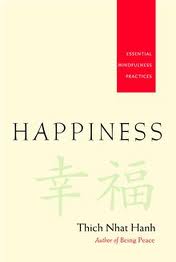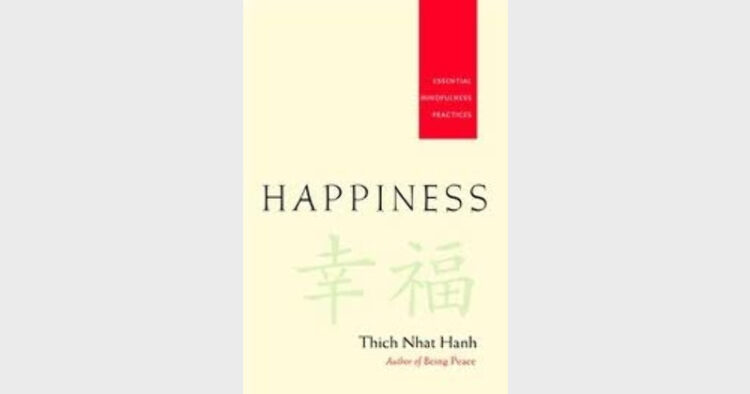Be happy, be practical
 Happiness: Essential Mindfulness Practices, Thich Nhat Hanh, Jaico Books, Pp 160, Rs 195.00
Happiness: Essential Mindfulness Practices, Thich Nhat Hanh, Jaico Books, Pp 160, Rs 195.00
THICH Nhat Hanh is a Vietnamese Buddhist monk and a Zen master whose efforts to generate peace and reconciliation won him the Nobel Peace Prize in 1967. His key teaching is that through mindfulness, we can learn to live in the present moment and gain peace.
Mindfulness is the energy of being aware and awake to the present. It is the continuous practice of touching life deeply every moment. Mindfulness can be practiced in our room or on our way to work or anywhere else. “We can do very much the same things we always do – walking, sitting, working, eating, talking – except that we learn to do them with an awareness of what we are doing.”
Thich Nhat Hanh says that the seed of mindfulness is present in each one of us, but we actually forget to water it. If we know how to take refuge in our seeds of peace and joy and allow them to manifest for our enjoyment and not seek refuge in an abstract notion of God, Buddha,or Allah, then we can realise that God can be touched in our breath and our step.
He also says that the mantra of mindfulness (smriti in Sanskrit) leads to concentration (samadhi), which in turn leads to insight (prajna). The insight we gain from mindfulness meditation can liberate us from fear, anxiety and anger, allowing us to be truly happy. To quote him: “We can practice mindfulness using something as simple as a flower. When I have a flower in my hand, I’m aware of it. My in-breath and out-breath help me maintain my awareness. Rather than becoming overwhelmed by other thoughts, I sustain my enjoyment in the flower’s beauty. Concentration itself becomes a source of joy.” He adds that to enjoy life’s gifts to the full, we must practice mindfulness at every turn, whether we are brushing our teeth, cooking our food or driving to work. He suggests practices like conscious breathing, sitting meditation, walking meditation, telephone meditation, browsing, mindful eating, resting, relaxation, hugging meditation, writing a love letter, solitude, silence, Dharma discussion, tree hugging, etc. to serve the sole purpose – to bring our minds back to our bodies, to produce our true presence and to become fully alive so that everything happens in the light of mindfulness.
In Buddhism there’s a wonderful image of the world, full of bright shiny jewels. This world is called the dharmakaya which we can see in our everyday life. We have a rich inheritance of virtues of which we are not aware. Thich Nhat Hanh recites:
You, the richest person on Earth
Who has been going around begging for a living,
Stop being the destitute child.
Come back and claim your heritage.
We should enjoy our happiness
And offer it to everyone.
Cherish this very moment
Let go of the stream of distress
And embrace life fully in your arms.
(Jaico Publishing House, A-2 Jash Chambers, 7-A Sir Phirozshah Mehta Road, Fort, Mumbai-400 001; www.jaicobooks.com)













Comments